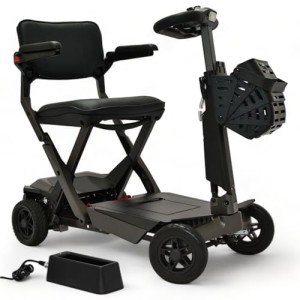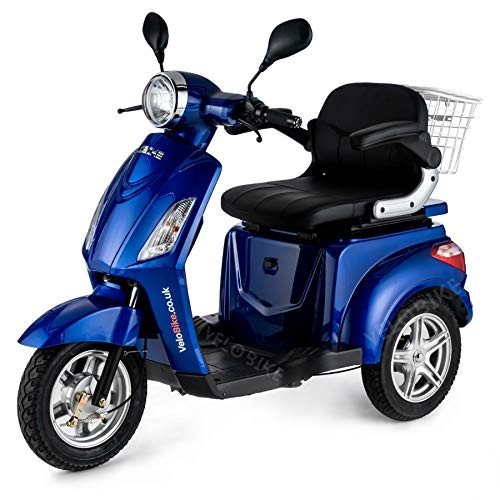mobility-scooter0684
mobility-scooter0684
14 Savvy Ways To Spend Leftover Mobility Scooters Budget

Electric Mobility Scooters UK: A Comprehensive Guide
Electric mobility scooters have rapidly become a crucial part of modern-day transportation, particularly in the United Kingdom. These devices provide a practical, eco-friendly, and economical option for people with mobility concerns, permitting them to keep their self-reliance and navigate their lives with higher ease. This short article provides a detailed overview of electric mobility scooters in the UK, including their benefits, types, legal factors to consider, and ideas for choosing the best model.

Intro to Electric Mobility Scooters
Electric mobility scooters are motorized lorries developed to help people with walking difficulties or other mobility impairments. They are available in various sizes and styles, from compact models for indoor use to robust, all-terrain scooters for outdoor activities. These scooters are powered by rechargeable batteries and can reach speeds of approximately 8 miles per hour, depending upon the design.
Benefits of Electric Mobility Scooters
- Improved Independence
- Mobility scooters enable users to take a trip longer distances without tiredness, lowering the requirement for help from others.
- Economical
- Compared to other kinds of transport, electric scooters are relatively inexpensive to purchase and preserve.
- Eco-Friendly
- Electric mobility scooters produce no emissions, making them an ecologically friendly option.
- Improved Accessibility
- These scooters can be used in numerous settings, from supermarkets and shopping centers to parks and recreational locations, increasing availability.
- Social Inclusion
- By supplying a method of transportation, mobility scooters assist users remain socially linked and taken part in community activities.
Kinds Of Electric Mobility Scooters
-
Class 2 (Electric Wheelchairs)
- Designed for usage on pavements and paths.
- Optimum speed: 4 miles per hour.
- Ideal for indoor and outdoor use.
-
Class 3 (Electric Mobility Scooters)
- Can be utilized on roadways, pavements, and walkways.
- Maximum speed on roads: 8 miles per hour.
- Maximum speed on pavements: 4 miles per hour.
- Suitable for longer journeys and outside use.
-
Collapsible Scooters
- Compact and lightweight, developed for easy storage and transportation.
- Suitable for users who regularly take a trip or have actually limited storage area.
-
All-Terrain Scooters
- Built to handle rough terrain and off-road conditions.
- Often have larger wheels and more effective motors.
- Perfect for users who enjoy outdoor activities like hiking or gardening.
-
Heavy-Duty Scooters
- Designed to support users with greater weight capabilities.
- Durable building and construction and improved durability.
- Ideal for people who need a more robust and reliable alternative.
Legal Considerations in the UK
-
Licensing and Insurance
- No driving license or insurance is required for Class 2 and Class 3 mobility scooters.
- However, users need to be at least 14 years old to ride a Class 3 scooter on the roadway.
-
Road Rules
- Class 3 scooters must have a red and amber light system and a rear reflector to be utilized on the roadway.
- Users must follow road guidelines and understand their surroundings.
- Pavement usage is restricted to 4 mph for both Class 2 and Class 3 scooters.
-
Disability Allowance
- Some users might be qualified for a mobility allowance through the UK government, which can help cover the cost of a scooter.
- The Motability Scheme is a government-funded program that provides monetary help for acquiring Mobility scooters uk help.
Tips for Choosing the Right Electric Mobility Scooter
-
Examine Your Needs
- Figure out where and how you will mostly utilize the scooter (inside, outdoors, both).
- Consider the distance you need to travel and the terrain you will encounter.
-
Test Ride
- Check out a local mobility shop to check ride various models.
- Ensure the scooter is comfortable and easy to operate.
-
Battery Life
- Choose a scooter with a battery life that suits your day-to-day needs.
- Think about the charging time and the accessibility of backup batteries.
-
Weight Capacity
- Examine the weight capacity of the scooter to ensure it can support your requirements.
- Durable models are available for users with higher weight requirements.
-
Features and Accessories
- Search for features like adjustable seats, tilt mechanisms, and easy-to-read control board.
- Consider accessories such as baskets, safety belt, and weather condition security.
Upkeep and Safety
-
Routine Check-Ups
- Set up regular maintenance checks to ensure the scooter remains in good working condition.
- Replace used parts and recharge the battery routinely.
-
Security Gear
- Constantly use appropriate safety equipment, such as a helmet and reflective clothing.
- Use lights and reflectors when riding in low-light conditions.
-
Road Etiquette
- Be polite to pedestrians and other roadway users.
- Follow designated paths and prevent congested locations.
-
Storage and Security
- Shop the scooter in a dry, safe and secure location to avoid damage and theft.
- Think about utilizing a locking system or GPS tracker for included security.
Regularly Asked Questions (FAQs)
Q: Do I need a driving license to utilize an electric mobility scooter in the UK?
- A: No, a driving license is not needed for Class 2 or Class 3 mobility scooters. Nevertheless, users should be at least 14 years old to ride a Class 3 scooter on the road.
Q: Can I use my mobility scooter on the pavement?
- A: Yes, both Class 2 and Class 3 scooters can be utilized on pavements and walkways. The optimum speed on pavements is 4 mph.
Q: How much does an electric mobility scooter cost?
- A: Prices differ depending upon the model and features. Entry-level scooters can cost around ₤ 500, while more innovative designs can range from ₤ 1,000 to ₤ 5,000.
Q: Is there financial support offered for purchasing a mobility scooter?
- A: Yes, the Motability Scheme supplies financial assistance for qualified individuals. You might also be qualified for a disability allowance to assist cover the expense.
Q: How far can an electric mobility scooter travel on a single charge?
- A: The variety varies by design, but most scooters can travel in between 10 to 30 miles on a single charge. Heavy-duty designs might have a shorter variety.
Q: Can I transfer my mobility scooter in a car?
- A: Yes, collapsible and light-weight models are designed for simple transportation. Some car producers also provide adaptive devices to accommodate mobility scooters.
Q: Are there any age limitations for utilizing a mobility scooter?
- A: There are no specific age restrictions for utilizing a Class 2 scooter. Nevertheless, users must be at least 14 years of ages to ride a Class 3 scooter on the roadway.
Q: Can I utilize my mobility scooter in bad weather?
- A: Most electric mobility scooters are weather-resistant, but it’s suggested to use caution and avoid extremely damp or icy conditions. Think about adding weather condition security accessories.
Electric mobility scooters have actually transformed the way people with mobility problems travel and engage in day-to-day activities. With their numerous advantages, including improved independence, cost-effectiveness, and environmental friendliness, they are an important financial investment for numerous people. By comprehending the different types of scooters, legal considerations, and upkeep tips, users can make informed choices and take pleasure in the full variety of advantages these gadgets use. Whether you are looking for a compact indoor model or a robust all-terrain scooter, there is a perfect choice offered to satisfy your requirements and enhance your lifestyle.
Extra Resources
- Motability Scheme: Visit the official website for more information on financial help and eligibility.
- Department for Transport: Read the standards for utilizing mobility scooters in the UK.
- Local Mobility Shops: Find a credible shop in your location to test ride and acquire a mobility scooter.


